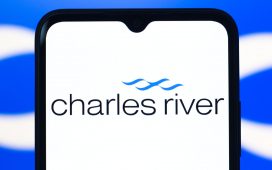
With half of 2024 in the rearview mirror and the second half on the horizon, you may be able to give yourself a pat on the back for sticking to the financial goals you set at the start of the year — or, maybe, discover that you’ve veered off track.
Either way, now is a good time to do a “financial checkup.”
“If you set a goal, ‘just set it and forget it’ doesn’t work,” said certified financial planner Jaime Eckels, a wealth management partner at Plante Moran Financial Advisors in Auburn Hills, Michigan.
“You need to have accountability and you need to check in,” she said. “It doesn’t have to be every two weeks. It doesn’t have to be every month, but a mid-year checkup is a perfect time to kind of revisit everything.”
Giving yourself a financial checkup involves taking a holistic view of your finances — including your cash flow and debt, savings and retirement accounts, as well as insurance coverage and estate plan.
Here are five steps to take:
Review your cash flow
Start by tallying the money coming into and going out of your bank and other financial accounts.
When reviewing your monthly spending and savings, check whether you have more money going into your bank accounts than you do coming out. That should be the case, according to experts.
Still, it’s difficult for many Americans to cover all of their daily or monthly expenses with their paycheck. Some have dipped into their savings or turned to credit cards to buy groceries. To avoid piling on debt, pay close attention to the unit price of groceries to find the cheapest items. And if you can, use cash or a debit card at checkout to avoid taking on debt for everyday spending.
You also may need to dial back dining out and other discretionary purchases. Stick to necessities for the next month or so and see if your cash flow improves.
Focus on high interest rates
High interest rates can be a challenge and an opportunity.
“With rates near 20-year highs, it’s important to review any outstanding high-interest debt you may have — like credit cards or other types of loans — and focus on paying down those balances first,” said Terry Rasmussen, president and CEO of Thrivent, a Minneapolis-based financial services provider.
Credit card holders with an account balance have an average interest rate of about 23%, according to Federal Reserve data. If you are carrying a balance, reduce your credit usage and work on paying down the debt to lessen that burden. Making these moves can help improve your credit score — and potentially lower the card rate you may qualify for in the future.
“On the savings side, higher interest rates mean that high-yield savings, money market accounts, and CDs may have greater upside than usual,” Rasmussen said.
The average annual percentage yield, or APY, for a savings account is 0.58%, according to Bankrate, but high-yield savings accounts average about 4.88%.
Boost emergency and retirement savings
Damircudic | E+ | Getty Images
Ideally, you should have three to six months of living expenses saved in an emergency fund. If you dipped into that account to pay for car or home repairs or another unexpected expense, now is the time to figure out how you can turbocharge your savings — or at least get back to a regular savings strategy.
“The nice thing is you’re getting 4.5% to 5% on your cash right now” in many high-yield savings accounts, Eckels said. “So people should be feeling a little bit better about keeping cash on hand and keeping that money in emergency reserve.”
Make sure that you are contributing enough money to your 401(k) plan or workplace retirement plan to get the company’s matching contribution. You don’t want to leave that free money on the table. The maximum employee contribution to a 401(k) plan this year is $500 more than 2023 at $23,000, or $30,500 if you’re 50 or older. For those who fall into a higher tax bracket, some experts suggest boosting pre-tax retirement contributions to reduce taxable income.
If you don’t have a workplace retirement plan, you can open a traditional or Roth IRA on your own through your bank or brokerage. The maximum IRA contribution for 2024 is $7,000, or $8,000 if you’re 50 or older. Again, that’s $500 higher than last year.
Tackle taxes early
It’s not too early to take some steps now to lessen your potential tax hit for the year. Use the tax withholding calculator on the IRS website to make sure you’re having the right amount of taxes withheld from your paycheck.
“If you owed a lot in 2023, consider increasing your federal withholding by updating your Form W-4,” said David Peters, founder of Peters Financial in Richmond, Virginia. “This can prevent surprises next April.” Peters is a certified public accountant and a CFP.
And, if you’re self-employed or a part-time worker receiving income that does not have taxes withheld, make sure you’re making adequate quarterly estimated tax payments. If you don’t pay enough estimated tax on your income or pay it late, you may have to pay a penalty even if the IRS owes you a refund.
Protect your assets
Moyo Studio | E+ | Getty Images
As you assess your financial well-being, consider not only your current money situation but also how you can protect what you have.
Make sure your health, life and disability insurance coverage align with your current needs and circumstances. Also, double-check the coverage limits on your home and auto insurance policies.
“Explore any discounts or bundling options that may be available from an insurer to optimize your insurance costs and benefits,” Rasmussen said.
The ultimate goal, she added, is to “ensure that your policies adequately protect your assets, provide sufficient liability coverage, and provide for your family should the unthinkable occur.”
SIGN UP: Money 101 is an 8-week learning course on financial freedom, delivered weekly to your inbox. Sign up here. It is also available in Spanish.











